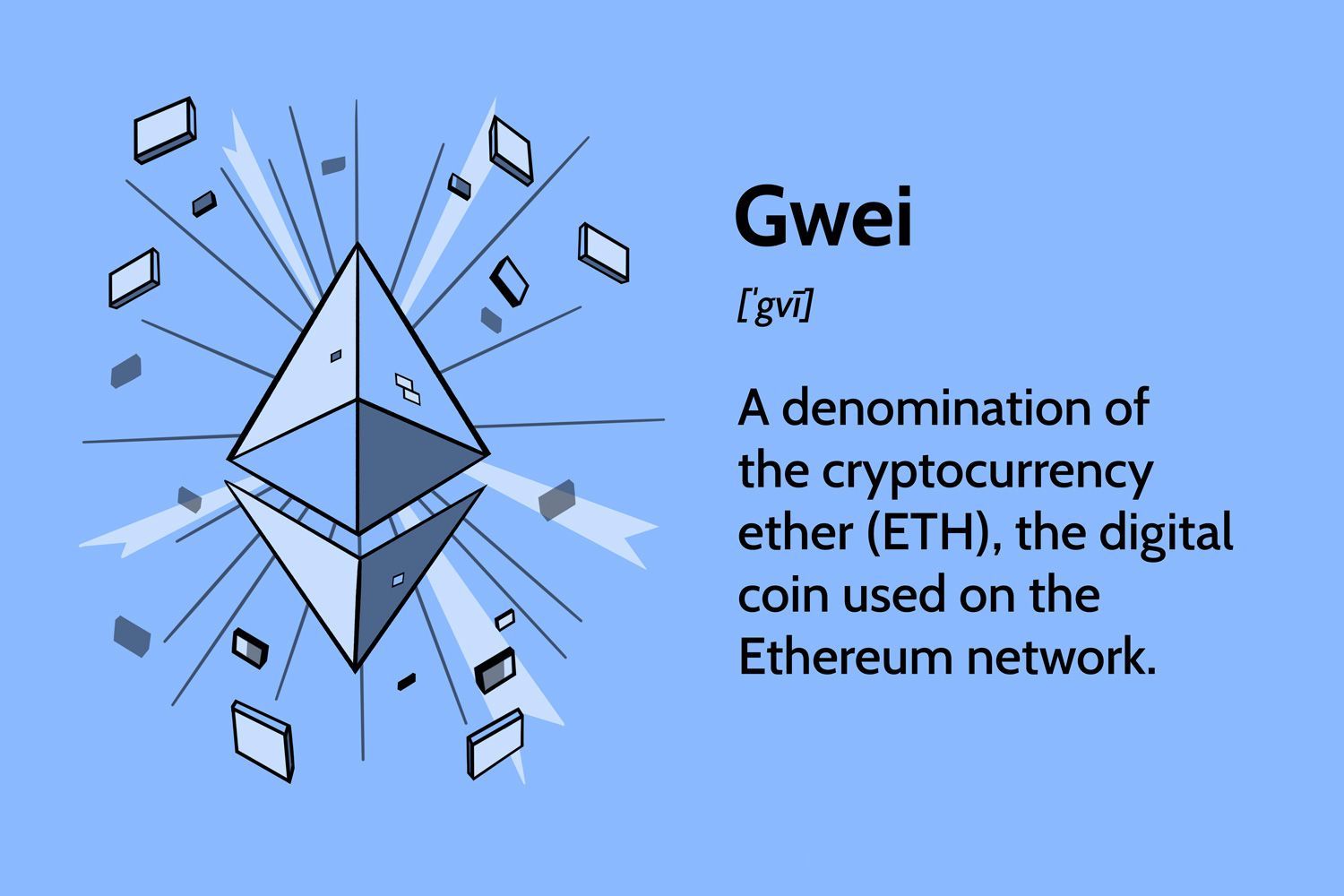How Many Block Confirmations Are Needed in Ethereum
When it comes to conducting transactions on the Ethereum blockchain, one important aspect to consider is the number of block confirmations needed. Block confirmations refer to the number of blocks that have been added to the blockchain since the block containing the transaction. These confirmations provide a level of confidence that the transaction is valid and cannot be easily reversed or manipulated.
The number of block confirmations required in Ethereum is influenced by various factors, including the type of transaction and the level of security desired. In general, the more block confirmations a transaction has, the higher the level of security and confidence in its validity. However, waiting for too many block confirmations can lead to delays in transaction finality, especially for time-sensitive transactions.
For low-value or non-critical transactions, a smaller number of block confirmations may be sufficient. These transactions are often considered safe with just one or two block confirmations. However, for high-value transactions or those involving sensitive information, waiting for more block confirmations is recommended to ensure the transaction’s security and prevent potential double-spending.
It’s worth noting that Ethereum’s network has a block time of around 15 seconds, which means that a new block is mined approximately every 15 seconds. This relatively fast block time allows for quicker confirmation of transactions compared to some other blockchain networks.
Additionally, the risk of a transaction being reversed decreases as more block confirmations are added. While a single confirmation provides some level of assurance, it is considered the most vulnerable stage, as a malicious actor with sufficient computational power could attempt to reverse the transaction at this point. As the number of confirmations increases, the difficulty and cost of reversing the transaction become exponentially higher.
Ultimately, the number of block confirmations needed in Ethereum depends on the specific circumstances of the transaction and the desired level of security. It’s important for individuals and businesses to assess these factors and make informed decisions regarding the appropriate number of confirmations to wait for.
In the next section, we will explore the factors that influence the number of block confirmations required in Ethereum, providing a deeper understanding of how transaction security is ensured on the Ethereum network.
Introduction
With the rise of blockchain technology, Ethereum has emerged as a leading platform for conducting secure and decentralized transactions. As more individuals and businesses adopt Ethereum for various purposes, it becomes crucial to understand the concept of block confirmations and their significance in ensuring transaction security.
Block confirmations play a vital role in validating transactions and ensuring their irreversible nature on the Ethereum blockchain. When a transaction is initiated, it is included in a block, which is then added to the blockchain. Block confirmations refer to the number of subsequent blocks that have been added to the blockchain after the block containing the transaction.
In this article, we will delve into the importance of block confirmations in Ethereum and the factors influencing the number of confirmations required. We will also explore the typical number of block confirmations for different transaction types and the risks associated with low confirmations.
Understanding block confirmations is crucial because they serve as a measure of transaction reliability and protection against potential fraud or double-spending. By waiting for a certain number of block confirmations, participants in the Ethereum network can have confidence that a transaction is valid and will not be easily reversed or tampered with.
It is important to note that the number of block confirmations needed may vary depending on the nature of the transaction and the desired level of security. Low-value or non-critical transactions may require fewer confirmations, while high-value or sensitive transactions may warrant a greater number of confirmations.
In the following sections, we will explore how block confirmations work in Ethereum, the factors influencing the required number of confirmations, and the risks associated with low confirmations. By gaining a deeper understanding of these concepts, you can make informed decisions regarding the number of block confirmations needed for your transactions on the Ethereum blockchain.
Now, let’s dive into the details of how block confirmations work in Ethereum and the factors that influence their significance.
What are block confirmations?
In the world of blockchain technology, block confirmations refer to the number of blocks that have been added to the blockchain since a specific block containing a transaction. Each block confirms the validity and authenticity of the previous block, creating a chain of blocks known as the blockchain.
When a transaction is initiated on the Ethereum network, it is broadcasted to the network’s nodes, which are responsible for validating and adding transactions to the blockchain. Miners, who are part of the network, compete to solve complex mathematical problems to validate and add new blocks to the blockchain.
Once a block is added to the blockchain, it is considered confirmed. However, it is crucial to note that a single confirmation is not sufficient to guarantee the permanence and immutability of a transaction. This is due to the possibility of a blockchain fork, wherein a temporary split occurs in the blockchain, resulting in multiple versions of the chain.
As more blocks are added to the blockchain, the likelihood of a fork decreases, and the level of confidence in the transaction increases. This is why multiple block confirmations are necessary to provide a higher level of assurance regarding the finality and integrity of a transaction.
The number of block confirmations required to consider a transaction secure varies depending on the specific use case and the level of risk tolerance. Low-value transactions with minimal consequences may require only a few confirmations, while high-value transactions or those involving critical information may demand a greater number of confirmations.
Block confirmations provide a crucial defense against various forms of attacks, such as double-spending. Double-spending refers to the act of spending the same amount of cryptocurrency twice, which can harm the integrity and trustworthiness of the network. By waiting for a sufficient number of block confirmations, the chances of a successful double-spending attack are greatly reduced.
In summary, block confirmations in Ethereum validate and reinforce the security and reliability of transactions on the blockchain. By requiring a certain number of confirmations, participants can have confidence in the immutability of transactions and guard against potential risks. In the next section, we will explore the importance of block confirmations in ensuring the integrity of transactions on the Ethereum network.
Importance of block confirmations
Block confirmations play a crucial role in ensuring the integrity, security, and trustworthiness of transactions on the Ethereum blockchain. They provide a mechanism to verify the validity of transactions and protect against potential fraud or manipulation.
One of the primary reasons why block confirmations are important is their role in preventing double-spending. Double-spending occurs when the same cryptocurrency is spent more than once, essentially creating counterfeit transactions. By waiting for a certain number of block confirmations, the likelihood of a successful double-spending attack decreases significantly. Each confirmation adds another layer of trust, making it increasingly difficult for malicious actors to manipulate the transaction history.
Block confirmations also enhance the immutability of transactions. Once a transaction is confirmed and included in multiple blocks, it becomes more challenging to alter or reverse it. This is because changing a transaction in a previous block would require recalculation of the cryptographic puzzle associated with that block, as well as all subsequent blocks. The computational effort required to modify the blockchain increases exponentially with the number of confirmations, making it impractical and cost-prohibitive.
Moreover, block confirmations provide a level of assurance and confidence to participants in the Ethereum network. By waiting for a sufficient number of confirmations, users can be reasonably certain that their transactions have been accepted and validated by the majority of network nodes. This increases trust in the system and encourages wider adoption of Ethereum for various use cases, including financial transactions, supply chain management, and decentralized applications.
It is important to note that the required number of block confirmations may vary depending on the specific use case and the level of security desired. Low-value transactions, such as small purchases or minor transfers, can generally be considered secure with a small number of confirmations. On the other hand, high-value transactions or those involving sensitive information may require a larger number of confirmations to ensure a higher level of security.
Overall, block confirmations are an essential component of the Ethereum blockchain, providing a necessary level of assurance, security, and trust in the validation and finality of transactions. By understanding the importance of block confirmations, users can make informed decisions and take necessary precautions to ensure the integrity and reliability of their transactions on the Ethereum network.
How block confirmations work in Ethereum
Block confirmations in Ethereum are a critical aspect of transaction validation and security. Understanding how block confirmations work is essential for participants in the Ethereum network to ensure the trustworthiness and reliability of their transactions.
When a transaction is initiated on the Ethereum network, it is broadcasted to the network’s nodes, which are responsible for validating and adding transactions to the blockchain. Miners, who participate in the network, compete to solve complex mathematical problems in order to validate and add new blocks to the blockchain.
Each block contains a set of transactions, including the one being confirmed. Once a new block is added to the blockchain, it is considered confirmed. However, a single confirmation does not provide sufficient security and immutability. To achieve a higher level of trust, more block confirmations are required.
The number of block confirmations required in Ethereum varies depending on factors such as the type of transaction and the desired level of security. It is generally recommended to wait for multiple confirmations to minimize the risk of potential attacks and ensure the finality of the transaction.
As more blocks are added to the blockchain, the difficulty of reversing a transaction increases exponentially. This is because modifying a transaction in a previous block would require recalculating the cryptographic puzzle associated with that block, as well as all subsequent blocks. The computational effort required to alter the blockchain becomes extremely impractical and costly.
Ethereum’s network has a relatively fast block time of around 15 seconds, meaning that a new block is added to the blockchain approximately every 15 seconds. This quick block time allows for faster confirmation of transactions compared to some other blockchain networks.
The level of security provided by block confirmations is directly related to the number of confirmations. Early confirmations are considered to be the most vulnerable stage, as a malicious actor with sufficient computational power could attempt to reverse the transaction during this time. However, as the number of confirmations increases, the likelihood of a successful attack decreases significantly.
It is worth noting that some Ethereum applications, especially those with time-sensitive transactions, may accept a lower number of confirmations to achieve faster transaction finality. However, this comes with an associated risk of potential blockchain forks or other attack vectors.
In summary, block confirmations in Ethereum provide a measure of transaction security by validating and ensuring the integrity of transactions on the blockchain. By waiting for multiple block confirmations, participants can have greater confidence in the permanence and reliability of their transactions. In the next section, we will explore the factors influencing the number of block confirmations required in Ethereum.
Factors influencing the number of block confirmations required
The number of block confirmations required in Ethereum is influenced by several factors that determine the level of security and trustworthiness desired for a transaction. These factors help participants in the Ethereum network determine the appropriate number of confirmations to wait for before considering a transaction as valid and final.
One of the key factors impacting the number of block confirmations required is the value or significance of the transaction. Low-value transactions, such as small purchases or microtransactions, may be considered safe with just a few block confirmations. However, for high-value transactions, such as large financial transfers or valuable asset exchanges, a greater number of confirmations is recommended to ensure a higher level of security.
The level of risk associated with a specific transaction also influences the number of confirmations required. Transactions involving sensitive information or critical operations may require more block confirmations to mitigate the potential risks. By waiting for additional confirmations, participants can minimize the chances of a successful attack, such as double-spending or transaction manipulation.
The level of network congestion also plays a role in determining the number of block confirmations needed. When the Ethereum network is experiencing high traffic, it may take longer for transactions to be confirmed and included in blocks. In such cases, waiting for more confirmations is advisable to ensure that the transaction has been validated by a significant portion of network nodes and to account for any potential delays or reorganizations in the blockchain.
Another factor to consider is the level of trust in the Ethereum network itself. Ethereum is a decentralized system that relies on a consensus mechanism and the computational power of miners to validate and add blocks to the blockchain. Participants may choose to wait for more confirmations if they have concerns about the integrity or security of the network, or if they perceive a higher risk of potential attacks.
It’s also important to note that different Ethereum applications may have specific requirements or recommendations for the number of block confirmations needed. Some applications with time-sensitive transactions, such as cryptocurrency exchanges, may require a lower number of confirmations to achieve faster transaction finality. However, this comes with an associated risk of potential blockchain forks or other attack vectors.
Overall, the factors influencing the number of block confirmations required in Ethereum are primarily related to the value, significance, risk, network congestion, and trust in the network. By evaluating these factors, participants can make informed decisions about the appropriate number of confirmations to wait for, striking a balance between transaction security and timeliness. In the next section, we will explore the typical number of block confirmations for different transaction types in Ethereum.
Typical number of block confirmations for different transaction types
The number of block confirmations required for different transaction types in Ethereum can vary based on several factors, including the transaction’s value, sensitivity, and desired level of security. While specific recommendations may differ among applications and individuals, there are some general guidelines for typical numbers of block confirmations.
For low-value or non-critical transactions, such as small purchases or low-risk transfers, a single block confirmation may be considered sufficient. This means that as soon as the transaction is included in a block and added to the blockchain, it is typically considered confirmed and irreversible. This enables faster transaction finality, particularly for scenarios where immediate confirmation is more important than an extremely high level of security.
However, for high-value transactions or those involving sensitive information, waiting for multiple block confirmations is recommended to ensure a higher level of security. Most participants in the Ethereum network and blockchain experts suggest waiting for at least six block confirmations for these types of transactions. Waiting for six confirmations helps protect against potential blockchain forks or reorganizations and minimizes the risk of double-spending attacks.
In some cases, such as large financial transfers, major asset exchanges, or interactions with decentralized applications (dApps) that handle significant amounts of funds, participants may opt to wait for a greater number of confirmations. Waiting for 12 or more confirmations is not uncommon for these types of transactions, as it provides an additional layer of security and peace of mind.
It is important to note that the Ethereum blockchain’s relatively fast block time of approximately 15 seconds allows for quicker confirmation compared to other blockchain networks. This faster confirmation capability contributes to improved transaction finality and enhances participants’ confidence in the Ethereum network’s security.
Ultimately, the decision on the number of block confirmations to wait for depends on the specific circumstances of the transaction and the risk tolerance of the participants. It is advisable to consider factors such as transaction value, sensitivity, potential risks, and the current state of the Ethereum network when determining the appropriate number of confirmations.
It’s worth mentioning that some Ethereum applications or platforms may implement their own recommendations or requirements for the number of block confirmations needed. For example, cryptocurrency exchanges may have specific policies regarding the number of confirmations required before funds can be considered settled and available for trading.
By following the typical guidelines for block confirmations and taking into account the specific context of each transaction, participants in the Ethereum network can have greater confidence in the security and reliability of their transactions. In the next section, we will explore the risks and considerations associated with low block confirmations.
Risks and considerations with low block confirmations
While low block confirmations can offer faster transaction finality, there are inherent risks and considerations associated with relying on a small number of confirmations in Ethereum. It is essential to carefully evaluate these risks to make informed decisions regarding transaction security and minimize potential vulnerabilities.
One of the main risks of low block confirmations is the possibility of blockchain forks or reorganizations. A blockchain fork occurs when multiple valid versions of the blockchain exist temporarily due to conflicting blocks being added simultaneously. This situation can lead to temporary inconsistencies in transaction histories and create uncertainty about the true state of the blockchain. By waiting for more block confirmations, the risk of blockchain forks decreases, as it becomes less likely that the confirmed transaction will end up in a discarded branch of the blockchain.
Another consideration is the potential for double-spending attacks. With low block confirmations, there is a higher probability of successful double-spending attempts. Double-spending occurs when the same cryptocurrency is spent multiple times, resulting in fraudulent transactions. By waiting for more block confirmations, participants can significantly reduce the risk of double-spending, as it becomes increasingly challenging and expensive for an attacker to rewrite a transaction history with a greater number of confirmations.
Network congestion is another factor to consider. During periods of high traffic on the Ethereum network, such as during popular decentralized applications (dApps) or ICO launches, low block confirmations may not provide sufficient security. Higher congestion can result in delays in transaction processing and increase the likelihood of temporary forks and network instability. To mitigate the risks associated with network congestion, waiting for more block confirmations is advisable to ensure that the transaction has been validated by a significant portion of network nodes.
Furthermore, the value and sensitivity of the transaction should also be taken into account. Low-value transactions or those with minimal consequences may be considered safe with low block confirmations. However, for high-value transactions or those involving critical information, waiting for more confirmations becomes crucial to minimize the risk of financial loss or data compromise.
Participants should weigh the benefits of faster transaction finality against the potential risks and consider the specific context of their transactions. They should assess factors such as transaction value, sensitivity, network congestion, and their trust in the Ethereum network to determine the appropriate number of block confirmations.
Lastly, it is crucial to stay informed about the latest research and developments in blockchain security. As the technology evolves, new attack vectors and vulnerabilities may emerge. Remaining up to date with best practices and recommendations from Ethereum developers and the community can help mitigate risks associated with low block confirmations.
By carefully considering these risks and taking informed decisions, participants can strike a balance between transaction security and timeliness, ensuring a reliable and secure experience on the Ethereum network.
Conclusion
Understanding the importance of block confirmations in Ethereum is essential for ensuring the security, reliability, and trustworthiness of transactions on the blockchain. Block confirmations provide validation, protection against fraud, and immutability to transactions, building confidence among participants in the Ethereum network.
We have explored the concept of block confirmations and how they work in Ethereum. By waiting for multiple block confirmations, participants can significantly increase the security and finality of their transactions, mitigating the risks of double-spending and potential attacks.
The number of block confirmations required depends on various factors, such as the value, significance, and sensitivity of the transaction, as well as network congestion and trust in the Ethereum network. Low-value transactions may be considered secure with just a few confirmations, while high-value transactions or those involving critical information may warrant a greater number of confirmations.
It is crucial to consider the risks and considerations associated with low block confirmations, including the possibility of blockchain forks, double-spending attacks, and network congestion. By carefully evaluating these risks, participants can make informed decisions to strike a balance between transaction security and timeliness that aligns with their specific use cases and risk tolerance.
Staying informed about the latest developments and best practices in blockchain security is essential to ensuring the safety of transactions and minimizing potential vulnerabilities. As the Ethereum network evolves, it is important to adapt and implement robust security measures to protect against emerging threats.
In conclusion, block confirmations are a fundamental part of the Ethereum blockchain, providing a critical layer of validation, security, and trust. By understanding their importance and considering the factors that influence the required number of confirmations, participants can confidently engage in transactions on the Ethereum network, benefiting from the decentralized and secure nature of this innovative technology.

























